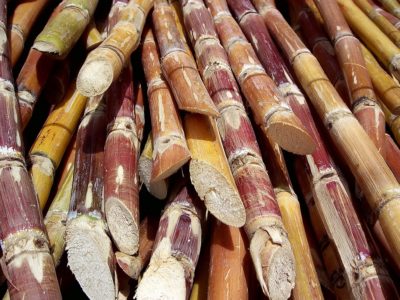How Cane Sugar Processing Chemicals Improve Sugar Quality and Yield
The function of processing chemicals in walking stick sugar production is essential, as they straight affect both the high quality and return of the last product. By utilizing compounds such as lime and phosphoric acid, producers can successfully eliminate pollutants and improve extraction efficiency. The consolidation of triggered carbon and enzymes serves to optimize the breakdown of complex sugars, ultimately leading to a purer and higher-quality sugar. The details of exactly how these chemicals communicate within the processing setting raising concerns about their lasting effects and prospective developments in the industry.
Review of Walking Stick Sugar Processing
Cane sugar handling includes a collection of critical actions that transform raw sugarcane right into polished sugar products. The procedure begins with harvesting, where mature sugarcane stalks are reduced and transported to processing centers. Upon arrival, the walking cane goes through cleaning to remove impurities such as dirt and plant products.
Following cleaning, the walking stick is squashed to remove the juice, which consists of sucrose - sugar and cane. This juice undergoes explanation, where lime and warm are used to eliminate remaining pollutants and non-sugar components. The made clear juice is then vaporized to concentrate the sugar content, leading to the development of thick syrup
Following, the syrup is taken shape via a controlled air conditioning process, leading to sugar crystals. These crystals are separated from the continuing to be syrup in centrifuges. The raw sugar gotten is usually brownish because of recurring molasses content. To achieve polished sugar, more purification actions are used, consisting of washing, re-crystallization, and drying.
The end product is either packaged as raw sugar or even more processed into white sugar, catering to different consumer and industrial needs. This extensive series of steps makes sure the manufacturing of high-grade sugar, essential for numerous applications in food and beverage sectors.
Trick Handling Chemicals Used
The manufacturing of polished walking stick sugar relies on various handling chemicals that play considerable roles at various phases. This step is essential for boosting the general quality of the removed juice.
Phosphoric acid offers a dual objective; it improves the clarification procedure and assists in the removal of color-forming substances, adding to a greater pureness of the end product. Furthermore, sulfur dioxide functions as a whitening agent, permitting the efficient elimination of unwanted pigments and enhancing the shade of the sugar.
Other remarkable chemicals include activated carbon, which is utilized for further decolorization, and enzymes that promote the break down of intricate sugars into simpler types, therefore improving return. The cautious selection and application of these handling chemicals are essential for maximizing the effectiveness of sugar extraction and refining procedures, ultimately causing a more constant and better sugar product.

Effect on Sugar Quality
Exactly how do processing chemicals affect the quality of refined sugar? The intro of numerous chemicals in the walking stick sugar handling stage considerably improves the pureness and overall top quality of the last product. Trick agents, such as phosphoric acid and calcium hydroxide, facilitate the explanation procedure, properly eliminating impurities and colorants that can adversely influence sugar's appearance and taste. By neutralizing unwanted parts, these chemicals assist achieve a higher degree of decolorization, leading to click a much more aesthetically enticing and valuable product.
Furthermore, the use of turned on carbon and ion-exchange materials throughout the refining procedure plays an essential duty in getting rid of off-flavors and unfavorable odors, adding to the sugar's sensory account. This refinement not only boosts the visual and organoleptic high qualities yet also boosts the service life by lessening microbial activity image source related to pollutants.
On top of that, the specific application of these chemicals makes sure that the sugar displays a consistent grain dimension and flowability, which are vital characteristics for both commercial applications and customer preferences. Overall, the critical use of handling chemicals is essential in achieving high-grade refined sugar that meets market standards and customer expectations.

Enhancing Yield Performance
Enhancing return efficiency in walking stick sugar handling involves enhancing different phases of manufacturing to take full advantage of the quantity of sugar removed from raw walking cane. One crucial element is the choice and application of ideal handling chemicals, which can facilitate the break down of cell walls and improve sugar release during removal. Chemicals such as acids and enzymes play a crucial duty in this procedure by hydrolyzing polysaccharides and liquifying impurities, thereby improving the overall extraction efficiency.

Routine monitoring and modification of processing specifications are essential to preserve efficiency throughout production (sugar and cane). By using these techniques, sugar manufacturers can not only boost the quantity of sugar gotten however additionally decrease waste and reduced manufacturing costs, adding to an extra profitable and sustainable sugar handling procedure
Benefits for Producers and Consumers
Cane sugar processing chemicals offer significant benefits for both consumers check out here and producers, developing an extra reliable and lasting industry. For producers, these chemicals enhance removal procedures, leading to higher yields and boosted sugar top quality.
The better high quality of sugar translates to far better preference and consistency in food items. Additionally, the use of handling chemicals can lead to a more steady supply of sugar, mitigating lacks and price spikes that can happen due to ecological factors or market changes.
Verdict

The role of handling chemicals in walking stick sugar manufacturing is essential, as they directly affect both the high quality and return of the final product (sugar and cane). The consolidation of triggered carbon and enzymes serves to enhance the breakdown of intricate sugars, eventually leading to a purer and higher-quality sugar.Walking cane sugar processing involves a series of critical actions that transform raw sugarcane right into refined sugar products.Enhancing return effectiveness in cane sugar handling includes maximizing various phases of production to make best use of the quantity of sugar removed from raw walking stick.Walking cane sugar processing chemicals play a critical role in boosting both sugar quality and yield